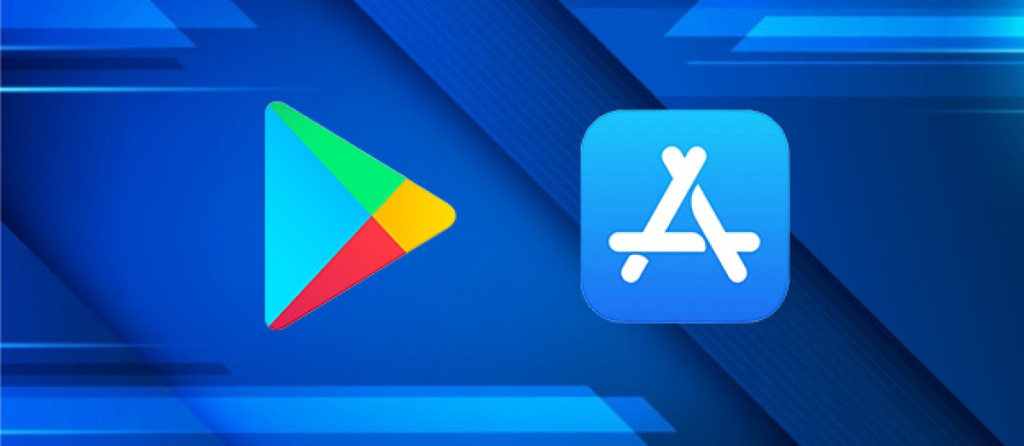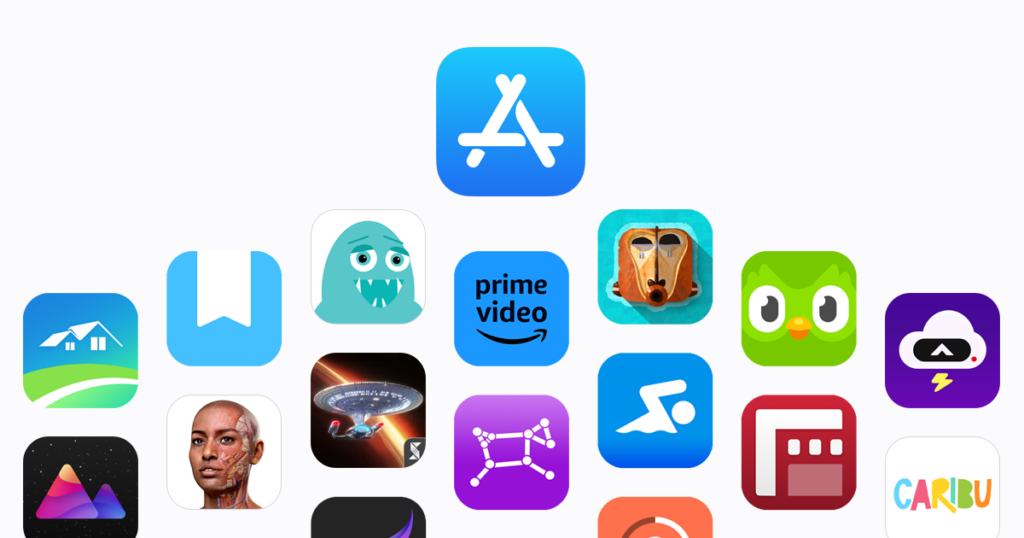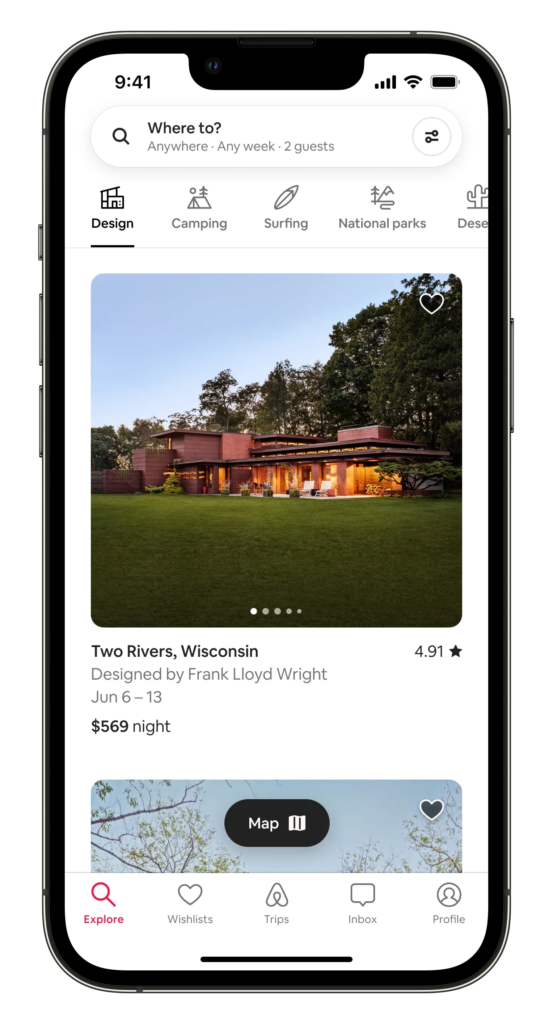Key Takeaways
- Stay Ahead: Master the latest ASO trends for 2024 to boost your app’s visibility and downloads in a competitive market.
- Optimize Effectively: Utilize data-driven insights and innovative strategies to enhance user experience and engagement within your app.
- Future-proof Your Success: Embrace emerging technologies, prioritize user satisfaction, and integrate off-store ASO tactics to ensure long-term growth and relevance.
In an era where smartphones have become an integral part of our daily lives, the app market continues to surge with unprecedented growth.
With millions of apps vying for attention across various app stores, the need for a robust App Store Optimization (ASO) strategy has never been more crucial.
Welcome to the Ultimate Guide to App Store Optimization (ASO) for 2024, where we delve deep into the dynamic landscape of app discovery and provide you with actionable insights to propel your app to the forefront of the competition.

The Evolution of ASO: Navigating the Shifting Tides of the App Ecosystem
The digital ecosystem is in a constant state of flux, with algorithms, user behaviors, and market trends evolving at breakneck speed.
As we step into 2024, it’s imperative for app developers and marketers alike to stay ahead of the curve by understanding the latest trends shaping the ASO landscape.
From algorithm updates to changing user preferences, this guide serves as your compass, guiding you through the intricacies of ASO in the current year.
Unraveling the Mysteries of App Store Algorithms: Deciphering the Code to Success
At the heart of ASO lies the complex algorithms governing app store rankings and visibility.
With major app stores like the Apple App Store and Google Play Store continually tweaking their algorithms, staying abreast of these changes is paramount.
Our comprehensive analysis of recent algorithm updates and predictions for future trends equips you with the knowledge needed to adapt your ASO strategy accordingly, ensuring maximum visibility and downloads for your app.
Keyword Research: Unlocking the Door to App Discovery
Keywords serve as the lifeblood of ASO, acting as the bridge between users and your app.
In this guide, we delve into the art and science of keyword research, unveiling the tools and techniques needed to identify high-performing keywords tailored to your app’s niche.
From long-tail keywords to competitor analysis, we leave no stone unturned in our quest to help you uncover the keywords that will propel your app to the top of search results.
Crafting Compelling App Store Metadata: Captivating Users from the First Glance
Your app’s metadata is its digital storefront, enticing users to click through and explore further.
From optimizing your app title and description to creating captivating visuals, every element plays a crucial role in attracting and retaining users.
Our in-depth exploration of app store metadata optimization arms you with the strategies needed to craft compelling narratives and visually stunning assets that captivate users and drive downloads.
Enhancing User Experience and Engagement: Fostering Loyalty in a Crowded Marketplace
Beyond rankings and downloads, the true measure of app success lies in user satisfaction and engagement.
In this section, we delve into the strategies for improving app ratings, soliciting user feedback, and localizing your app for global audiences.
By prioritizing user experience and engagement, you not only boost your app’s visibility but also foster long-term loyalty and advocacy among your user base.
Leveraging Off-Store ASO Strategies: Extending Your Reach Beyond the App Store
While ASO primarily focuses on optimizing your app’s presence within app stores, its impact extends far beyond these digital storefronts.
From leveraging social media channels to building backlinks and collaborations, we explore the off-store ASO strategies that amplify your app’s reach and credibility.
By integrating ASO with your broader digital marketing efforts, you create a synergistic approach that maximizes your app’s exposure and downloads.
Embark on Your ASO Journey: Navigating the Road Ahead
As we conclude this introduction to the Ultimate Guide to App Store Optimization (ASO) for 2024, we invite you to embark on a journey of discovery and growth.
Whether you’re a seasoned app developer or a newcomer to the app market, this guide equips you with the knowledge and strategies needed to navigate the ever-changing landscape of ASO and position your app for success in the year ahead.
Join us as we unravel the mysteries of ASO and empower you to unlock the full potential of your app.
Before we venture further, we like to share who we are and our digital experiences.
About AppLabx
From developing a solid marketing plan to creating compelling content, optimizing for search engines, leveraging social media, and utilizing paid advertising, AppLabx offers a comprehensive suite of digital marketing services designed to drive growth and profitability for your business.
AppLabx is well known for helping companies and startups use SEO to drive ASO to their websites and web apps.
At AppLabx, we understand that no two businesses are alike. That’s why we take a personalized approach to every project, working closely with our clients to understand their unique needs and goals, and developing customized strategies to help them achieve success.
If you need a digital consultation, then send in an inquiry here.
Ultimate Guide to App Store Optimization (ASO) for 2024
- Understanding the Latest Trends in App Store Algorithms
- Conducting Keyword Research for Optimal Results
- Crafting Compelling App Store Metadata
- Enhancing User Experience and Engagement
- Leveraging Off-Store ASO Strategies
- Looking Ahead: Future-proofing Your ASO Strategy
1. Understanding the Latest Trends in App Store Algorithms
In the ever-evolving world of app store algorithms, staying ahead of the curve is essential for maximizing your app’s visibility and success.
Here, we delve into the latest trends shaping app store algorithms in 2024 and provide actionable insights to help you adapt your ASO strategy accordingly.
Emphasis on User Engagement Metrics
- Example: Both the Apple App Store and Google Play Store have increasingly prioritized user engagement metrics, such as retention rates, session duration, and in-app actions, in their algorithms.
- Actionable Insights: Focus on optimizing your app’s user experience to encourage longer sessions and higher retention rates. Implement features that encourage regular usage and meaningful interactions within your app.

Contextual Relevance and Personalization
- Example: App stores are placing greater emphasis on delivering personalized recommendations to users based on their past behavior, preferences, and demographics.
- Actionable Insights: Tailor your app’s metadata, including keywords and descriptions, to align with the interests and needs of your target audience. Leverage user data and analytics to refine your ASO strategy and deliver a more personalized experience to users.
Quality and Relevance of Reviews and Ratings
- Example: App store algorithms now consider not only the quantity but also the quality and relevance of app reviews and ratings in determining app rankings.
- Actionable Insights: Encourage users to leave authentic and constructive reviews by implementing in-app prompts and incentives. Respond promptly to user feedback and address any issues or concerns raised to maintain a positive reputation and improve your app’s visibility.
Visual Content Optimization
- Example: With the rise of visually-driven platforms like TikTok and Instagram, app stores are increasingly prioritizing visual content, such as app icons, screenshots, and videos, in their algorithms.
- Actionable Insights: Invest in creating visually appealing and informative app assets that effectively communicate your app’s value proposition and features. Test different visual elements to identify what resonates best with your target audience and drives higher conversion rates.
Localization and Global Expansion
- Example: As app markets continue to expand globally, app stores are placing greater importance on localization and supporting apps in multiple languages and regions.
- Actionable Insights: Localize your app’s metadata, including app title, description, and keywords, to cater to the language and cultural preferences of international users. Consider regional differences in app store preferences and optimize your ASO strategy accordingly to maximize your app’s visibility in diverse markets.
Algorithm Transparency and Updates
- Example: App stores are becoming more transparent about their algorithm updates and providing developers with insights into the factors influencing app rankings.
- Actionable Insights: Stay informed about the latest algorithm updates and changes announced by app stores. Continuously monitor your app’s performance metrics and adapt your ASO strategy in response to algorithmic changes to maintain or improve your app’s visibility and rankings.
Integration of AI and Machine Learning
- Example: App stores are leveraging AI and machine learning technologies to analyze user behavior and preferences, optimize search results, and deliver personalized app recommendations.
- Actionable Insights: Embrace AI-driven ASO tools and platforms to gain deeper insights into user behavior and trends. Utilize AI-driven optimization techniques to refine your app’s metadata and improve its discoverability and relevance in app store search results.
By understanding and adapting to these latest trends in app store algorithms, you can position your app for greater visibility, downloads, and success in 2024 and beyond.
Keep a pulse on industry developments and continuously refine your ASO strategy to stay ahead of the competition and maximize your app’s potential.
2. Conducting Keyword Research for Optimal Results
Keyword research is the cornerstone of effective App Store Optimization (ASO), helping you identify the terms and phrases that users are searching for and optimizing your app’s metadata accordingly.
In this comprehensive guide, we explore the best practices for conducting keyword research to achieve optimal results in 2024.

Importance of Keyword Research in ASO
- Example: Suppose you have developed a fitness app. By conducting keyword research, you discover that terms like “workout planner,” “fitness tracker,” and “exercise routines” have high search volumes and low competition.
- Actionable Insights: Incorporate these high-performing keywords strategically into your app’s metadata to improve its visibility and discoverability in app store search results.
Utilizing Keyword Research Tools and Techniques
- Example: ASO tools provide valuable insights into keyword search volumes, competition levels, and trends.
- Actionable Insights: Leverage these tools to identify relevant keywords for your app, analyze competitor keywords, and track keyword performance over time.
Identifying Relevant and High-Performing Keywords
- Example: Use keyword research tools to generate a list of potential keywords related to your app’s niche, then analyze their search volume and competition levels to prioritize the most effective ones.
- Actionable Insights: Focus on long-tail keywords that are specific to your app’s features and functionalities, as they often have lower competition and higher conversion rates.
Analyzing Competitor Keywords and Strategies
- Example: Analyze the keywords used by your competitors in their app titles, descriptions, and metadata. Identify common trends and uncover opportunities to differentiate your app.
- Actionable Insights: Borrow insights from successful competitors while also exploring niche keywords that they may have overlooked. Strive to strike a balance between relevance and competition when selecting keywords for your app.
Strategies for Selecting the Most Effective Keywords
- Example: Experiment with different keyword combinations and variations to see which ones resonate best with your target audience. Monitor keyword performance and adjust your strategy accordingly.
- Actionable Insights: Divide your keywords into primary, secondary, and long-tail categories based on their relevance and search volume. Tailor your app’s metadata to incorporate a mix of these keywords for maximum impact.
Adapting to Changing Trends and User Behavior
- Example: Keep a pulse on industry trends, seasonal changes, and shifts in user behavior to adapt your keyword strategy accordingly. For example, the rise of remote work may lead to increased demand for productivity apps.
- Actionable Insights: Continuously monitor keyword performance metrics and be prepared to iterate and refine your keyword strategy to capitalize on emerging opportunities and stay ahead of the competition.
Optimizing Keyword Placement in App Metadata
- Example: Incorporate your chosen keywords strategically into your app’s metadata, including the app title, subtitle, keywords field, and description.
- Actionable Insights: Ensure that your keywords are seamlessly integrated into your app’s metadata in a natural and user-friendly manner. Avoid keyword stuffing, as it can have a negative impact on your app’s visibility and credibility.
By following these best practices for conducting keyword research, you can unlock the full potential of ASO and improve your app’s visibility, discoverability, and ultimately, its success in the competitive app market of 2024 and beyond.
Continuously refine your keyword strategy based on data-driven insights and evolving trends to stay ahead of the curve and maximize your app’s potential.
3. Crafting Compelling App Store Metadata
Crafting compelling app store metadata is essential for attracting users’ attention and convincing them to download your app.
In this detailed guide, we’ll explore the best practices for optimizing your app’s metadata to enhance its visibility and conversion rates in the competitive app store landscape of 2024.
Optimizing App Title and Subtitle
- Example: Consider the popular fitness app “MyFitnessPal.” Its title clearly conveys its purpose, while the subtitle provides additional context: “Calorie Counter & Diet Tracker.”
- Actionable Insights: Choose a concise and descriptive app title that incorporates relevant keywords to improve discoverability. Use the subtitle to further clarify your app’s functionality or unique selling points.
Selecting Effective Keywords
- Example: Imagine you’re developing a meditation app. Research shows that keywords like “meditation,” “mindfulness,” and “stress relief” are highly searched for.
- Actionable Insights: Incorporate relevant keywords strategically into your app’s metadata, including the title, subtitle, and keyword field, to improve its visibility in search results. Experiment with different keyword combinations and monitor their performance over time.
Writing Engaging App Description
- Example: The app description for the language learning app “Duolingo” effectively communicates its features and benefits in a concise and engaging manner, enticing users to learn more.
- Actionable Insights: Craft a compelling app description that highlights your app’s unique features, benefits, and value proposition. Use persuasive language to capture users’ attention and encourage them to download your app.
Creating Eye-Catching App Icons and Screenshots
- Example: The app icon for the productivity app “Todoist” is simple yet visually appealing, making it easily recognizable on the app store.
- Actionable Insights: Design an eye-catching app icon that stands out from the competition and reflects your app’s branding. Use high-quality screenshots to showcase your app’s key features and functionality in action, helping users visualize its value.
Implementing App Localization Strategies
- Example: The travel app “Booking.com” offers localized versions of its app in multiple languages, catering to a global audience of users.
- Actionable Insights: Localize your app’s metadata, including the app title, description, and keywords, to appeal to users in different regions and language preferences. Consider cultural nuances and local preferences when adapting your app for international markets.
A/B Testing and Iteration
- Example: The weather app “Weather Underground” continuously tests different variations of its app metadata to optimize conversion rates and improve user engagement.
- Actionable Insights: Conduct A/B tests to evaluate the effectiveness of different app metadata elements, such as titles, descriptions, and screenshots. Iterate based on user feedback and performance data to refine your app’s metadata over time.
Monitoring and Optimization
- Example: The social media app “Instagram” regularly monitors user feedback and app store reviews to identify areas for improvement and optimize its app metadata accordingly.
- Actionable Insights: Monitor user feedback, app store reviews, and performance metrics to identify strengths and weaknesses in your app’s metadata. Continuously optimize your app metadata based on user insights and market trends to maintain competitiveness and drive downloads.
By implementing these best practices for crafting compelling app store metadata, you can enhance your app’s visibility, attract more users, and ultimately increase downloads and engagement in the competitive app market of 2024 and beyond.
Stay proactive and continuously refine your app’s metadata based on user feedback and performance data to maximize its impact and success.
4. Enhancing User Experience and Engagement
Enhancing user experience and engagement is crucial for maximizing the success of your app in the competitive landscape of 2024.
In this comprehensive guide, we’ll explore actionable strategies to improve user satisfaction, retention, and advocacy, ultimately driving long-term success for your app.
Improving App Ratings and Reviews
- Example: The productivity app “Notion” actively solicits user feedback and responds promptly to user reviews, fostering a positive reputation and driving user engagement.
- Actionable Insights: Encourage users to leave reviews and ratings by implementing in-app prompts and incentives. Respond promptly and thoughtfully to user feedback, addressing any issues or concerns raised to improve user satisfaction and retention.
Implementing Personalization and Customization Features
- Example: The music streaming app “Spotify” offers personalized playlists and recommendations based on users’ listening preferences and behavior, enhancing user engagement and retention.
- Actionable Insights: Implement personalization features such as customized content recommendations, tailored notifications, and user-specific settings to enhance the user experience and foster a deeper connection with your app.
Gamification and Rewards Systems
- Example: The fitness app “Strava” gamifies the workout experience by allowing users to compete with friends and earn rewards for achieving fitness milestones, driving user engagement and motivation.
- Actionable Insights: Integrate gamification elements such as challenges, leaderboards, and rewards systems into your app to incentivize user participation and foster a sense of achievement and progression.
Seamless Onboarding and User Guidance
- Example: The meditation app “Headspace” offers a guided onboarding experience, helping new users understand how to use the app and get started with their meditation practice, reducing churn and improving user retention.
- Actionable Insights: Design a seamless onboarding process that guides users through the app’s key features and functionalities, providing clear instructions and assistance to ensure a positive first-time user experience.
Implementing In-App Messaging and Support
- Example: The customer service app “Zendesk” provides in-app messaging and support channels, allowing users to reach out to customer service representatives directly from within the app, improving user satisfaction and resolving issues quickly.
- Actionable Insights: Implement in-app messaging and support features to facilitate communication between users and customer support teams. Offer timely assistance and solutions to user inquiries and concerns to enhance the overall user experience.
Leveraging Push Notifications and Personalized Communication
- Example: The retail app “Amazon” sends personalized push notifications to users, alerting them to exclusive deals, product recommendations, and order updates, driving user engagement and conversion.
- Actionable Insights: Utilize push notifications to deliver relevant and timely updates, reminders, and offers to users based on their preferences and behavior. Personalize communication to enhance user engagement and drive action.
Continuous Iteration and Improvement
- Example: The navigation app “Waze” regularly updates its features and functionality based on user feedback and data insights, ensuring that the app remains relevant and valuable to users over time.
- Actionable Insights: Continuously monitor user feedback, engagement metrics, and app performance data to identify areas for improvement and optimization. Iterate on features and functionality to address user needs and preferences and stay ahead of evolving trends.
By implementing these actionable strategies for enhancing user experience and engagement, you can cultivate a loyal user base, drive long-term retention, and ultimately, maximize the success of your app in the competitive app market of 2024 and beyond.
Prioritize user satisfaction and engagement, and continuously iterate and improve your app based on user feedback and data insights to maintain competitiveness and drive sustainable growth.
5. Leveraging Off-Store ASO Strategies
While optimizing your app’s presence within app stores is crucial, leveraging off-store ASO strategies can further enhance your app’s visibility and reach.
In this comprehensive guide, we’ll explore actionable tactics to promote your app outside of traditional app store channels and drive downloads and engagement in the competitive landscape of 2024.
Utilizing External Channels for Promotion
- Example: The productivity app “Trello” promotes its app through social media platforms such as Twitter, LinkedIn, and Instagram, reaching a broader audience and driving user acquisition.
- Actionable Insights: Identify relevant external channels, including social media, blogs, forums, and industry publications, to promote your app and engage with potential users. Create compelling content and promotions tailored to each platform to maximize reach and engagement.

Building Backlinks and Collaborations
- Example: The travel app “Airbnb” collaborates with influencers and travel bloggers to create sponsored content and backlink opportunities, improving its search engine visibility and driving referral traffic to its app.
- Actionable Insights: Identify influencers, bloggers, and industry partners with audiences relevant to your app’s target demographic. Collaborate on content creation, guest blogging, and partnership opportunities to build backlinks and expand your app’s reach and credibility.

Implementing Content Marketing Strategies
- Example: The language learning app “Duolingo” publishes informative and engaging blog posts, videos, and podcasts related to language learning, attracting organic traffic and driving app downloads through content marketing.
- Actionable Insights: Develop a content marketing strategy focused on creating valuable and relevant content that addresses the needs and interests of your target audience. Share your content across multiple channels, including your website, blog, social media, and email newsletters, to increase visibility and drive traffic to your app.
Leveraging Influencer Marketing
- Example: The mobile game “Fortnite” collaborates with popular gaming influencers and streamers to showcase gameplay and promote in-game events, driving user engagement and app downloads through influencer marketing.
- Actionable Insights: Identify influencers and content creators with a significant following and influence within your app’s target audience. Partner with them to create sponsored content, reviews, tutorials, and live streams that showcase your app and encourage their followers to download and engage with it.
Optimizing Web Presence for Search Engines
- Example: The recipe app “Yummly” optimizes its website for relevant keywords and search queries related to cooking, recipes, and meal planning, attracting organic traffic and driving app downloads through search engine optimization (SEO).
- Actionable Insights: Optimize your website’s content, metadata, and structure to improve its visibility and ranking in search engine results pages (SERPs). Incorporate relevant keywords, meta tags, and high-quality content to attract organic traffic and direct users to download your app.
Integrating ASO with Other Digital Marketing Efforts
- Example: The fitness app “Fitbit” integrates its ASO efforts with its broader digital marketing strategy, including email marketing, paid advertising, and affiliate partnerships, to drive app downloads and user engagement across multiple channels.
- Actionable Insights: Align your ASO strategy with your broader digital marketing efforts to create a cohesive and integrated approach to app promotion. Coordinate messaging, branding, and promotions across various channels to maximize reach, engagement, and conversions.
Analyzing and Iterating on Off-Store ASO Strategies
- Example: The finance app “Mint” tracks and analyzes the performance of its off-store ASO strategies, including social media campaigns, influencer partnerships, and content marketing efforts, to identify areas for improvement and optimization.
- Actionable Insights: Monitor the performance metrics and ROI of your off-store ASO strategies using analytics tools and platforms. Iterate on your strategies based on data insights and user feedback to refine your approach and maximize the effectiveness of your app promotion efforts.
By leveraging off-store ASO strategies, you can expand your app’s reach, increase visibility, and drive downloads and engagement beyond traditional app store channels.
Prioritize strategic partnerships, content creation, and digital marketing efforts to maximize your app’s exposure and success in the competitive app market of 2024 and beyond.
6. Looking Ahead: Future-proofing Your ASO Strategy
Future-proofing your App Store Optimization (ASO) strategy is essential for staying ahead of the curve and adapting to the evolving landscape of the app market.
In this comprehensive guide, we’ll explore forward-thinking tactics and trends to ensure the long-term success of your app in 2024 and beyond.
Adapting to Emerging Technologies and Platforms
- Example: With the rise of augmented reality (AR) technology, apps like “Pokemon Go” have revolutionized the gaming industry, offering immersive and interactive experiences to users.
- Actionable Insights: Stay abreast of emerging technologies such as AR, virtual reality (VR), and artificial intelligence (AI), and explore ways to incorporate them into your app to enhance user engagement and differentiation.

Anticipating Shifts in User Preferences and Behavior
- Example: The rise of remote work and digital nomadism has led to increased demand for productivity and collaboration apps like “Slack” and “Zoom,” reflecting changes in user lifestyles and preferences.
- Actionable Insights: Keep a pulse on societal trends, cultural shifts, and changes in user behavior to anticipate evolving needs and preferences. Adapt your app’s features, functionality, and marketing messaging accordingly to remain relevant and valuable to users.
Embracing Diversity and Inclusivity
- Example: The meditation app “Calm” offers a diverse range of meditation sessions tailored to different backgrounds, experiences, and preferences, fostering inclusivity and accessibility.
- Actionable Insights: Prioritize diversity and inclusivity in your app’s content, design, and marketing efforts to appeal to a broader audience and create a more welcoming and inclusive user experience.
Optimizing for Voice Search and Conversational Interfaces
- Example: With the growing adoption of voice assistants like Amazon Alexa and Google Assistant, apps like “Uber” and “Domino’s Pizza” have integrated voice search and conversational interfaces to streamline user interactions.
- Actionable Insights: Optimize your app’s metadata and content for voice search queries and conversational interactions. Implement natural language processing (NLP) and voice recognition technologies to enhance user engagement and accessibility.
Investing in Privacy and Data Security
- Example: In response to growing concerns about data privacy and security, apps like “Signal” and “ProtonMail” have gained popularity by prioritizing user privacy and offering end-to-end encryption.
- Actionable Insights: Invest in robust privacy policies, data encryption, and security measures to protect user data and build trust with your audience. Communicate your commitment to privacy and security through transparent messaging and features that empower users to control their data.
Emphasizing Sustainability and Social Responsibility
- Example: Apps like “Ecosia” and “Too Good To Go” have gained traction by promoting sustainability and social responsibility, offering eco-friendly alternatives and initiatives to reduce waste and carbon footprint.
- Actionable Insights: Incorporate sustainability initiatives, ethical practices, and corporate social responsibility (CSR) efforts into your app’s mission and values. Engage with users and communities to drive positive impact and build brand loyalty.
Continuous Testing, Optimization, and Innovation
- Example: The travel app “Airbnb” continuously tests and iterates on its features and user experience to adapt to changing market dynamics and user feedback, maintaining its position as a market leader.
- Actionable Insights: Adopt a culture of continuous testing, optimization, and innovation to keep your app competitive and relevant. Experiment with new features, designs, and marketing strategies, and gather feedback to inform iterative improvements and enhancements.
By future-proofing your ASO strategy and embracing forward-thinking tactics and trends, you can position your app for sustained success and relevance in the ever-evolving app market of 2024 and beyond.
Stay agile, adaptable, and proactive in anticipating and responding to changes in technology, user behavior, and market dynamics to maintain a competitive edge and drive long-term growth.
Conclusion
Congratulations on completing the Ultimate Guide to App Store Optimization (ASO) for 2024.
In this comprehensive guide, we’ve delved deep into the intricacies of ASO and provided you with actionable insights, strategies, and examples to propel your app to success in the competitive landscape of 2024 and beyond.
As you embark on your ASO journey, remember the following key takeaways:
Harness the Power of Data and Insights
Utilize ASO tools and analytics platforms to gather data-driven insights into keyword trends, user behavior, and competitor strategies.
By leveraging data effectively, you can make informed decisions and optimize your app’s visibility and performance.
Prioritize User Experience and Engagement
Enhance the user experience and engagement within your app by implementing personalized features, gamification elements, and seamless onboarding processes.
Foster a sense of community and loyalty among your users to drive long-term retention and advocacy.
Embrace Innovation and Adaptation
Stay ahead of the curve by embracing emerging technologies, anticipating shifts in user preferences, and investing in sustainability and social responsibility.
Continuously test, iterate, and innovate to keep your app relevant and competitive in a rapidly evolving market.
Integrate Off-Store ASO Strategies
Expand your app’s reach beyond traditional app store channels by leveraging external channels, building backlinks, and collaborating with influencers and industry partners.
Integrate your ASO efforts with other digital marketing initiatives to create a holistic and integrated approach to app promotion.
Future-proof Your ASO Strategy
Anticipate future trends and challenges by future-proofing your ASO strategy.
Embrace diversity, prioritize privacy and data security, and emphasize sustainability and social responsibility to resonate with users and build a strong brand reputation.
Continuously Learn and Adapt
The landscape of ASO is constantly evolving, and success requires a willingness to learn, adapt, and evolve. Stay informed about industry developments, experiment with new strategies, and remain open to feedback and insights from users and industry experts.
As you implement the strategies and tactics outlined in this guide, remember that ASO is not a one-time endeavor but an ongoing process of optimization and refinement.
By continuously refining your ASO strategy based on data, insights, and user feedback, you can maximize your app’s visibility, engagement, and success in the dynamic and competitive app market of 2024 and beyond.
Elevate your app’s success with advanced ASO strategies and position yourself as a leader in your industry. Thank you for joining us on this journey, and we wish you the best of luck in your ASO endeavors.
If you are looking for a top-class digital marketer, then book a free consultation slot here.
If you find this article useful, why not share it with your friends and business partners, and also leave a nice comment below?
We, at the AppLabx Research Team, strive to bring the latest and most meaningful data, guides, and statistics to your doorstep.
To get access to top-quality guides, click over to the AppLabx Blog.
People also ask
How important is App Store Optimization (ASO) in 2024?
App Store Optimization (ASO) remains critical in 2024 as it directly impacts your app’s visibility and downloads, ensuring it stands out in a crowded marketplace.
What are the key components of an effective ASO strategy?
An effective ASO strategy includes optimizing app title, keywords, description, icon, screenshots, and reviews to enhance visibility and attract users.
How can I research relevant keywords for my app?
Utilize ASO tools like App Annie and Sensor Tower to research relevant keywords based on search volume, competition, and relevance to your app’s niche.
Is user engagement important for ASO?
Absolutely! User engagement metrics such as retention rate, session duration, and in-app actions are crucial factors that influence app store rankings.
How can I improve user engagement within my app?
Enhance user engagement by implementing personalized features, gamification elements, and seamless onboarding processes to keep users coming back for more.
What role does localization play in ASO?
Localization is essential for reaching international audiences. Translate your app’s metadata into different languages to cater to diverse markets effectively.
How do app updates affect ASO?
Regular app updates signal to app stores that your app is actively maintained and improved, positively impacting your ASO efforts and user perception.
Are there any off-store ASO strategies I should consider?
Yes, leverage external channels like social media, content marketing, influencer partnerships, and SEO to promote your app and drive downloads.
How can I track the effectiveness of my ASO efforts?
Monitor key performance indicators (KPIs) such as app store rankings, downloads, conversion rates, and user feedback to measure the impact of your ASO strategy.
What are some common ASO mistakes to avoid?
Avoid common ASO mistakes such as keyword stuffing, neglecting app updates, ignoring user feedback, and overlooking localization and optimization opportunities.
How often should I update my app’s metadata?
Regularly update your app’s metadata based on performance insights, user feedback, and market trends to maintain relevance and maximize visibility.
Can I A/B test my app’s metadata?
Yes, conduct A/B tests to experiment with different variations of your app’s metadata, including titles, descriptions, icons, and screenshots, to optimize for better results.
How can I improve my app’s ratings and reviews?
Encourage users to leave reviews and ratings by implementing in-app prompts, providing exceptional customer service, and addressing user feedback promptly and effectively.
What should I do if my app receives negative reviews?
Respond to negative reviews with empathy and professionalism, acknowledge users’ concerns, and offer solutions or explanations to resolve their issues and improve their experience.
How can I optimize my app’s visuals for ASO?
Optimize your app’s visuals by using high-quality screenshots, compelling app icons, and engaging promotional videos that accurately represent your app’s features and benefits.
Is there a correlation between app store ratings and rankings?
Yes, app store ratings and reviews significantly influence app store rankings, with higher-rated apps often receiving better visibility and placement in search results.
How can I differentiate my app from competitors?
Differentiate your app by highlighting its unique features, benefits, and value proposition in your app’s metadata and marketing materials to attract and retain users.
Should I prioritize app store optimization or paid advertising?
Both ASO and paid advertising are essential components of a comprehensive app marketing strategy. Prioritize ASO for long-term organic growth, complemented by targeted paid campaigns for immediate visibility and downloads.
How can I optimize my app for voice search?
Optimize your app for voice search by incorporating natural language keywords, conversational interfaces, and voice-activated features to enhance user experience and accessibility.
What are the best practices for app localization?
Localize your app’s metadata, content, and user interface to cater to specific regions and languages effectively. Consider cultural nuances, preferences, and market trends when adapting your app for international audiences.
How can I improve my app’s conversion rate on app store listings?
Improve your app’s conversion rate by optimizing app store listings with persuasive copywriting, compelling visuals, clear calls-to-action, and social proof elements such as ratings and reviews.
What are the benefits of integrating social media into my ASO strategy?
Integrating social media into your ASO strategy allows you to reach a broader audience, foster engagement and advocacy, and drive traffic to your app store listings through content sharing and influencer partnerships.
How do app store algorithm updates impact ASO?
App store algorithm updates can impact ASO rankings and visibility. Stay informed about algorithm changes and adapt your ASO strategy accordingly to maintain or improve your app’s performance.
Should I prioritize organic or paid user acquisition?
Organic user acquisition through ASO is crucial for long-term sustainable growth, but paid user acquisition can provide a valuable boost in visibility and downloads, especially during app launches or promotional campaigns.
How can I stay updated on the latest ASO trends and best practices?
Stay updated on the latest ASO trends and best practices by following industry blogs, attending conferences and webinars, participating in online communities, and networking with other app developers and ASO experts.
How long does it take to see results from ASO efforts?
Results from ASO efforts can vary depending on various factors such as app niche, competition, and market conditions. Generally, it may take several weeks to months to see significant improvements in app store rankings and downloads.
How can I optimize my app’s metadata for maximum impact?
Optimize your app’s metadata by conducting keyword research, incorporating relevant keywords strategically, optimizing visuals, and continuously iterating based on performance insights and user feedback.
Is ASO a one-time effort, or should it be ongoing?
ASO is an ongoing effort that requires continuous monitoring, optimization, and adaptation to remain competitive in the ever-evolving app market and maintain visibility and growth over time.




































